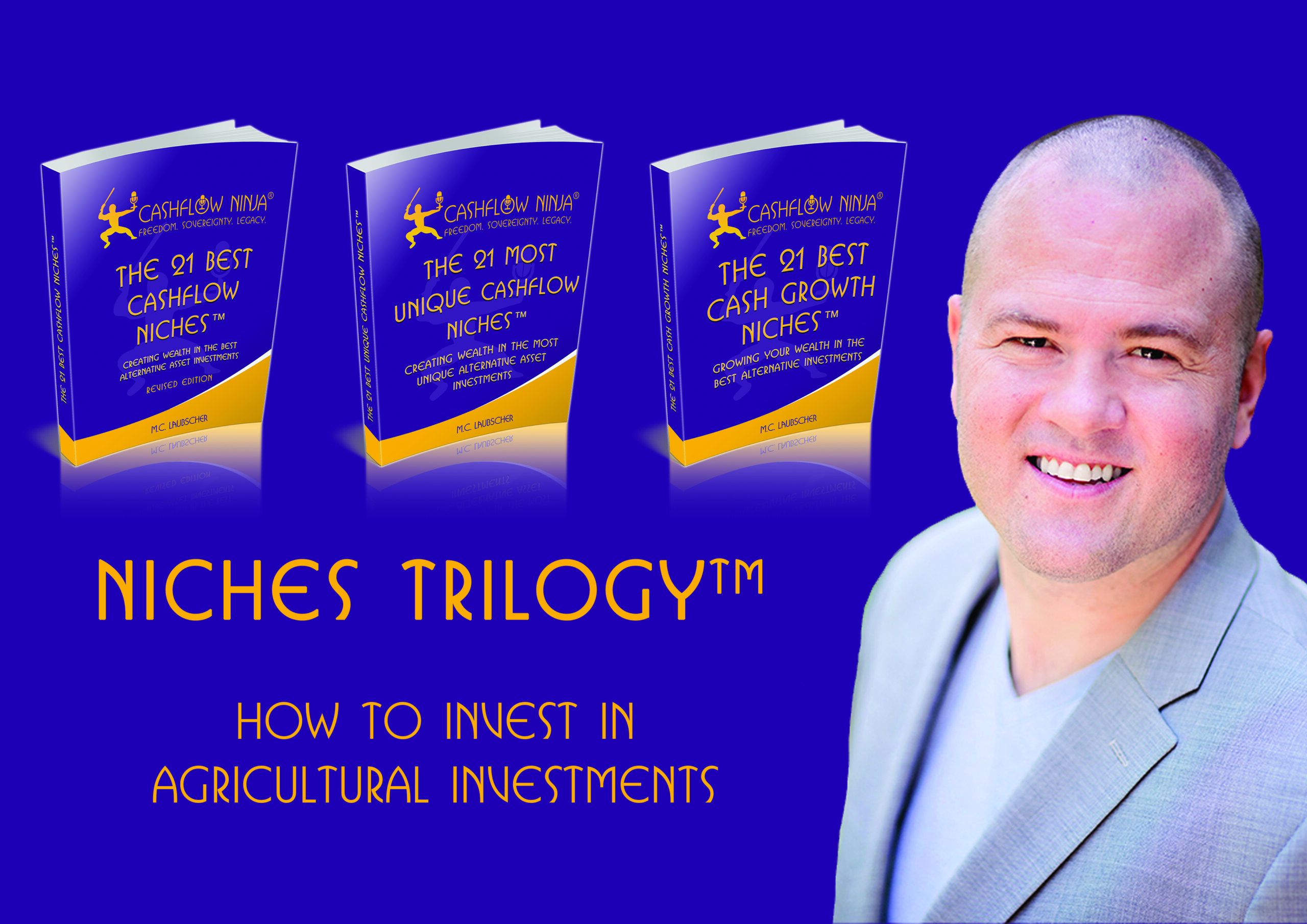
Investing in agriculture can be a great way to earn money while supporting sustainable global industries. With the world’s population growing, the demand for food, fiber, and biofuels is increasing. This makes agriculture an attractive sector for many investors.
Why Invest In Agricultural Investments?
Renowned investor and financial commentator Jim Rogers has long championed the cause of agricultural investments. He sees a growing imbalance in the supply and demand of agricultural products. Picture the world’s population on one side of a seesaw and the shrinking arable land on the other. As the global population balloons and emerging markets gain wealth, more resource-intensive foods are in demand. Meanwhile, urbanization and environmental degradation are reducing the amount of land that can be farmed.
Rogers also points to the graying hair among our farmers, particularly in countries like the U.S., as a ticking time bomb. As these farmers hang up their gloves, we might see a dip in agricultural production unless the younger generation steps up to the plate or technology fills the void.
The agriculture sector has also suffered from historical underinvestment, resulting in an infrastructure, research, and development gap. Yet, this makes the industry ripe for a comeback. Agriculture still waits to catch the surf while other sectors have been swept up in technological advancements. Rogers believes there’s room for growth as the industry embraces new technologies.
Furthermore, agriculture provides a field for portfolio diversification. It dances to a different tune than traditional assets like stocks or bonds. It can also act as your shield against inflation, protecting your wealth from inflationary blows.
Rogers also urges us to consider the geopolitical implications of agricultural investments. As resources become scarcer and demand rises, agriculture could play a pivotal role on the world stage.
In summary, why should investors consider agricultural investments? For starters, it provides diversification, offering a different risk and return profile than stocks and bonds. It’s also a bulwark against inflation, defending your wealth from inflationary pressures. Leasing out farmland can provide a steady, consistent rental income. Over time, the value of agricultural land tends to appreciate.
With the increasing global population and rising middle-class consumption in emerging markets, the demand for food is set to soar like a rocket. For those who care about the environment and society, agricultural investments can align with sustainable and impact investing principles. There are also opportunities in biofuel as the world seeks alternative energy sources, creating a demand for crops like corn for ethanol and soybeans for biodiesel.
So, while investing in agriculture might not be the first thing that comes to mind when considering investment portfolios, it should be. As Jim Rogers puts it, the agriculture sector is ripe for a turnaround, offering a unique combination of benefits that can both protect and grow your wealth.
Agricultural Ecosystem
The agricultural investment is evolving rapidly, offering a blend of traditional farming and advanced agri-tech innovations. Key trends shaping this space include sustainable and regenerative agriculture, which focuses on organic farming and permaculture practices to enhance soil health and biodiversity. Precision agriculture is also gaining traction, utilizing technologies like the Internet of Things (IoT), artificial intelligence (AI), and satellite imagery for efficient resource management in crop farming.
The rise in urban populations is fueling the growth of vertical and urban farming, known for its space efficiency and lower resource usage. Agri-tech startups are at the forefront of agricultural innovation, bringing new technologies in farm management, drones, and biotech.
Supply chain and logistics optimization is another trend, aiming to streamline operations through better forecasting and waste reduction. The demand for plant-based and alternative proteins drives investment in sustainable food alternatives. Agricultural export markets are also a focus, particularly in regions with vast arable land, aiming to meet international demand.
Sustainable aquaculture and fisheries are attracting investments for eco-friendlier practices, while agricultural real estate investment trusts (REITs) are becoming a popular way to invest in farmland. These trends, driven by global factors like population growth and technological advancements, make the agricultural sector a dynamic and promising field for investors.
How To Generate Income
The agricultural sector presents diverse paths that can lead to rewarding returns.
Ownership of farmland is more than just possession of soil and greenery; it’s a consistent source of income. By leasing out your land to farmers, you receive a fixed annual fee, creating a steady cash flow similar to rent from a tenant.
Alternatively, as a landowner, you might opt for a revenue-sharing model where you receive a portion of the crop’s revenue or the crop itself. This approach carries more risk but potentially higher rewards, akin to the dynamics of investing in a startup.
For those willing to take a hands-on approach, operating the farm yourself or choosing a managed operation can generate income by selling agricultural produce such as grains, fruits, vegetables, or livestock.
Agricultural properties also hold tourism potential. Vineyard tours, farm stays, or hunting and fishing leases can turn your land into a sought-after experience, generating additional income.
Capital appreciation is another potential benefit. While not a recurring source of income, selling agricultural assets that have increased in value over time can result in significant gains.
Niche markets within the agricultural world, such as organic farming, aquaculture, and exotic crops, can yield higher returns due to premium pricing.
Investment in agricultural technology, or ag-tech, provides another pathway for potential returns. Whether backing startups or established companies, you can earn money through dividends, licensing, or selling the technology or the company itself. This is reminiscent of participating in the tech boom but with a focus on agricultural advancements.
Contract farming is another viable strategy, enabling investors to contract with buyers—typically large agribusinesses—to provide certain crops at set prices. This approach guarantees a fixed income, like having a long-term client with consistent orders.
My preferred method to invest in agriculture is direct investing in farming projects through syndications.
How To Lose Money
Investing in agricultural investments comes with its risks.
The unpredictability of agricultural commodity prices, influenced by global supply and demand, geopolitical events, trade policies, and currency fluctuations, can make navigating this field as challenging as predicting the future. An investor may acquire assets at a high price, only for their value to drop sharply.
Nature plays a significant role in this sector. Diseases, pests, natural disasters, and extreme weather conditions constantly threaten crops and livestock. A single outbreak or calamity can cause considerable damage, leading to severe financial losses.
The realm of finance also presents potential pitfalls. Overleveraging, or borrowing heavily to invest in this sector, can turn sour if the returns fall short of expectations. This situation could lead to difficulty meeting debt obligations, resulting in substantial financial losses or bankruptcy.
Effective management is crucial in agriculture. Poor farming practices, mismanaged soil, or inadequate livestock handling can negatively impact yields and profitability. This scenario is comparable to running a business but neglecting its core operations.
The influence of government policies is another factor to consider. Subsidies, tariffs, and environmental regulations can significantly affect the profitability of agricultural investments.
Generally considered a safe investment, land values can depreciate due to decreased demand, oversupply, or local economic downturns. Water scarcity is another concern that can significantly impact agricultural productivity, especially in regions facing water shortages or legal disputes over water rights.
Investors must exercise caution in their choices. Some agricultural ventures may seem promising but fail to deliver the expected returns. Geopolitical risks are also a reality. Investments in regions with political instability, property rights concerns, or corruption can lead to unforeseen losses.
Supply chain disruptions and trade barriers can wrench into the smooth operation of agricultural businesses. Transportation issues, processing delays, or trade barriers can limit market access, inflate costs, and affect profitability.
Adopting technological advancements is vital in this sector. New technologies can enhance efficiency and productivity, but failing to embrace these changes can put agricultural investments at a disadvantage.
Contractual risks are another concern. Futures contracts, for example, can result in losses if the market takes an unfavorable turn. Lastly, environmental contamination, such as pollution or chemical spills, can have long-lasting effects on agriculture.
Positives & Negatives Of Agricultural Investing
Positives:
Diversification: Agricultural assets can provide diversity to your investment portfolio since they aren’t directly connected to traditional financial markets.
Tangible Assets: When you invest in farmland or livestock, you own actual, tangible assets that can offer a sense of security compared to intangible assets like stocks.
Potential for Growth: Over time, the value of agricultural land tends to increase, especially in areas with growing populations or limited arable land.
Income Generation: Agricultural investments can provide a steady income by selling crops and livestock or leasing land to farmers.
Protection Against Inflation: Investing in farmland and other agricultural assets can help protect your investment against inflation. As the cost of living rises, the value of tangible assets like land often goes up.
Growing Demand: With a growing global population and an emerging middle class in many countries, the demand for food and agricultural products is expected to rise.
Sustainability and Impact Investing: Sustainable and regenerative farming practices allow investors to contribute positively to the environment and society.
Government Support: Many governments offer subsidies to farmers or tax incentives for certain agricultural practices.
Multiple Uses: Farmland can have alternative uses, such as renewable energy projects or real estate development, which could increase its value.
Negatives:
Price Volatility: Commodity prices can be unpredictable due to weather, disease, global supply and demand, geopolitical events, and currency fluctuations.
Limited Liquidity: Agricultural assets, especially land, may take longer to sell than stocks or bonds, making them less liquid investments.
Operational Risks: Farming carries various operational risks, including pest infestations, diseases, and unpredictable weather events like droughts or floods.
High Initial Costs: Purchasing land, machinery, and other infrastructure can be expensive.
Management Requirements: Successful agricultural investments often require specific knowledge. Investors might need to rely on experts or dedicate time and effort to manage the investment.
Environmental Concerns: When farming practices aren’t sustainable, the land quality can suffer. Soil erosion and groundwater depletion are some of the ecological challenges farmers face.
Dependency on Natural Resources: Agriculture heavily relies on water and fertile soil. Farming becomes more complex and less profitable in regions with limited or declining resources.
Market Access and Distribution Challenges: Even if crops flourish, storing, transporting, and reaching markets can be challenging. This is especially true in remote or less-developed areas.
Investment Opportunity Filter™
The Investment Opportunity Filter™ evaluates an investment opportunity based on cashflow, tax benefits, appreciation, and the leverage it provides.
Agricultural Investments scores a 4/4 with The Investment Opportunity Filter™.
Agricultural investments can produce significant cashflow, have great tax benefits, assets can increase in value with efficient operations and management, and also allow for the leveraging of skill sets, capabilities, networks, and capital of others.
Download all the Niches Trilogy Books:
The 21 Best Cashflow Niches
Digital: https://www.
Audio: https://podcasters.spotify.
The 21 Most Unique Cashflow Niches
Digital: https://www.
Audio: https://podcasters.spotify.
The 21 Best Cash Growth Niches
Digital: https://www.
Audio: https://podcasters.spotify.
Listen To Cashflow Ninja Podcasts:
Cashflow Ninja
https://podcasters.spotify.
Cashflow Investing Secrets
https://podcasters.spotify.
Cashflow Ninja Banking
https://podcasters.spotify.
Share This
Related

840: Chris Rawley: How To Invest In Livestock
My guest in this episode is Chris Rawley. Chris is a retired Navy Reserve Captain, founded Harvest Returns in 2016 to democratize agricultural investments. During his 30-year military career, Rawley served in leadership roles across naval, expeditionary, and joint special operations units, deploying to regions such as Afghanistan, Iraq, Africa, the Middle East, and the…

839: Louis O’Connor: The Exciting Trends For Rare Earth Metals Right Now
My guest in this episode is Louis O’ Connor. Louis is the Founder, and Principal of Strategic Metals Invest. We are the only industry supplier in the world to offer private investors the option to purchase and profit from owning Strategic Metals. The investment play is exactly the same paradigm as investing in Precious Metals,…

838: Michael Cobb: How To Buy Your Home Overseas And Get It Right The First Time
Our guest today is Mike Cobb, co-founder & CEO of ECI Development and President of Gran Pacifica. Named among the “100 Outstanding CEOs in Central America” by Mercados & Tendencias, Mike left a successful career in the computer industry to pursue opportunities in the emerging real estate markets of Central America. In 1996, he co-founded…
